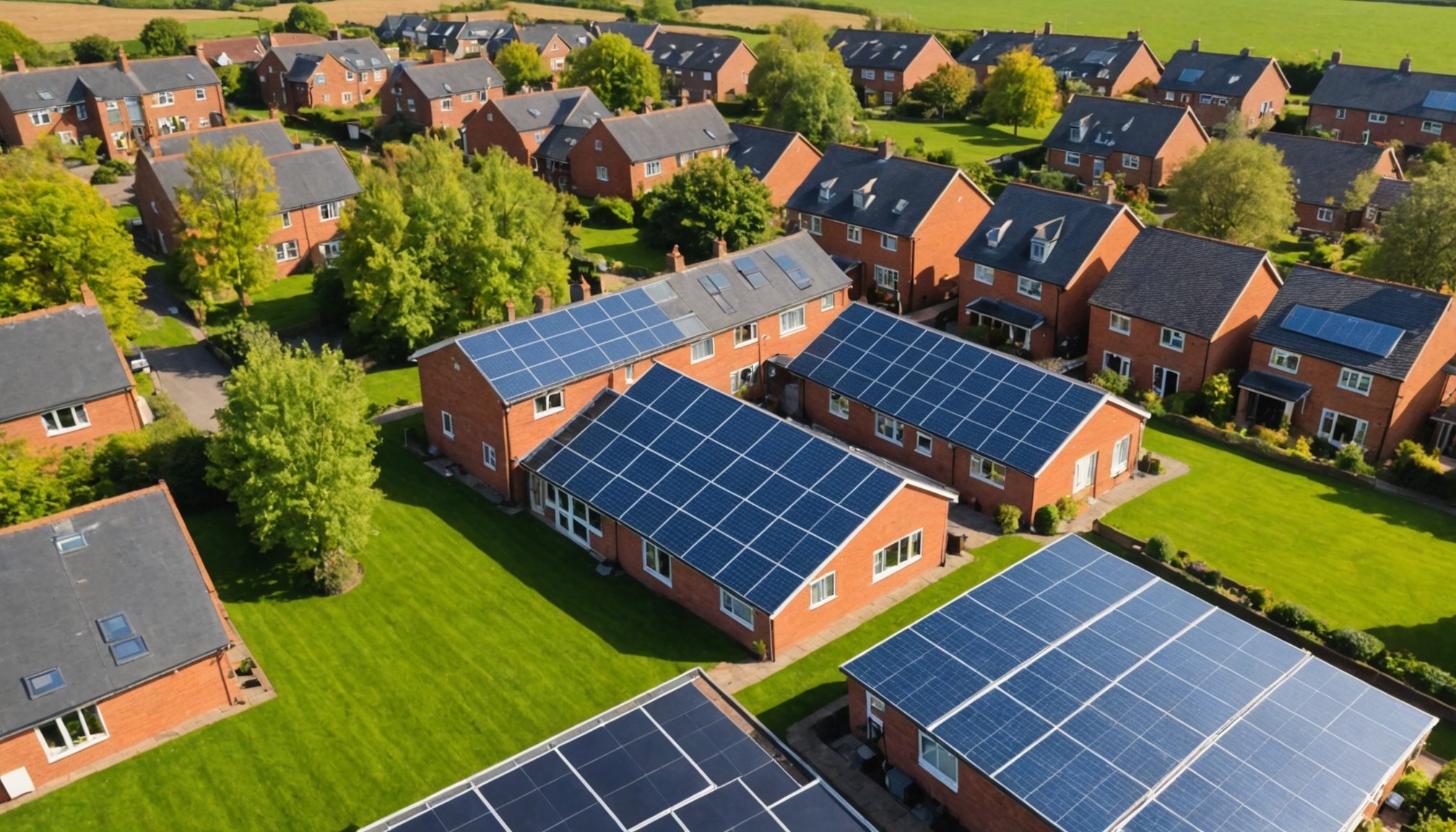Innovative Renewable Energy Technologies
The UK has made significant strides in renewable energy technologies, offering a range of innovative solutions for homeowners eager to transition to sustainable energy sources. Among these technologies, solar panels have become a leading choice due to their declining costs and increasing efficiency. By converting sunlight into electricity, solar panels provide a clean, renewable energy source, and many UK homes are embracing this technology with promising results.
Wind turbines are another option, especially viable in regions with consistent wind patterns. These turbines harness wind energy, which can significantly reduce reliance on fossil fuels. While larger installations are common in rural areas, urban versions like micro-wind turbines are gaining acceptance for rooftop setups in residential areas.
Have you seen this : Top Strategies to Propel Your Business Forward in the UK for 2024
Bioenergy systems, which convert organic materials into energy, offer additional innovative solutions for UK homes. These systems not only help manage waste but also contribute to reducing carbon footprints.
For example, a notable case study involves a community in Scotland utilizing bioenergy from local farming waste, effectively powering homes and demonstrating a successful implementation of this technology in a residential setting. Such instances highlight the practicality and benefits of integrating renewable energy systems in everyday life.
In the same genre : Optimizing UK Home Battery Storage for Peak Renewable Energy Efficiency
Government Incentives and Policies for Adoption
The UK government offers a variety of incentives and policies to encourage the adoption of renewable energy technologies. These initiatives aim to make the transition more financially viable for homeowners. They include grants and tax credits designed to ease the cost burden of installing systems like solar panels and wind turbines.
Current Government Initiatives
Current government incentives include the Smart Export Guarantee (SEG), enabling homeowners to sell excess energy back to the grid, boosting the financial viability of renewable installations. Additionally, the Green Homes Grant aids in offsetting installation costs for energy-efficient upgrades.
Financial Benefits for Homeowners
Homeowners benefit from schemes such as zero or reduced VAT rates on renewable technologies, heightening the appeal of solar panels and bioenergy systems. This significantly minimises upfront expenses, allowing more households to invest in greener solutions.
Long-Term Vision for Renewable Energy in the UK
The UK government is committed to increasing renewable energy investments through policy enhancements and future projections indicate further incentives for homeowners. By reducing dependence on fossil fuels, the nation aims to lead in sustainable energy practices. Homeowners can expect ongoing support as the UK positions itself as a leader in renewable energy technology adoption.
Community Programs and Local Initiatives
Community renewable programs and local initiatives play a pivotal role in promoting sustainable community practices. By spearheading innovative projects, these grassroots movements set an example of how collective efforts can yield substantial environmental benefits.
In the UK, numerous community-led projects have successfully harnessed renewable energy technologies. For instance, a community in Bristol has embraced solar panel installations on public buildings, demonstrating both the feasibility and the communal gains of sustainable energy sources. These projects not only reduce carbon footprints but also foster a sense of pride and responsibility among residents.
Homeowners can actively engage with these local initiatives by participating in community discussions and supporting programmes that advocate for green energy. This involvement could take the form of attending workshops, providing feedback on community energy plans, or even investing in collective renewable energy systems.
Moreover, by collaborating with local councils and organizations, communities can leverage incentives for larger-scale projects, such as wind or bioenergy systems. These collaborations are essential for achieving broader environmental goals and ensuring that innovative solutions reach a wider audience, ultimately leading to a more sustainable future for all community members.
Practical Tips for Homeowners
Transitioning to sustainable living practices can be both practical and efficient. For immediate impact, homeowners should focus on simple changes like switching to LED bulbs, which use less energy than traditional lighting. Another easy tip is unplugging electronics when not in use, reducing energy waste.
For long-term energy management, consider investing in smart home technologies that monitor and regulate energy consumption. Smart thermostats, for example, can optimize heating schedules, cutting down on unnecessary energy use. Installing solar panels can also be a strategic investment, providing significant savings through reduced energy bills and government incentives.
When building or renovating, utilize eco-friendly materials such as bamboo, recycled steel, or reclaimed wood to minimize environmental impact. These materials not only reduce your carbon footprint but also enhance the home’s sustainability.
Incorporating these strategies not only benefits the environment but also translates to economic savings over time. By taking these actionable steps, homeowners can make a meaningful contribution to energy efficiency and enjoy a more sustainable lifestyle.
Expert Insights and Testimonials
Exploring renewable energy in homes can initially seem daunting. Insights and experiences from sustainable energy experts are invaluable. They assert that transitioning to renewable energy offers long-term economic and environmental benefits, despite initial costs. Experts stress the importance of government incentives, which make renewable installations more accessible.
Homeowners who have embraced these systems contribute essential testimonials. Those who have switched to renewable energy frequently express satisfaction with reduced energy bills and minimal maintenance requirements. A common emphasis is on the role of solar panels, as they provide a consistent and substantial reduction in grid dependency.
A surprising insight from experts is addressing misconceptions about renewable energy. Many struggle with the myth that these technologies are not trustworthy or efficient enough. Professionals confirm these technologies’ reliability, particularly with advancements in wind turbines and bioenergy systems.
Testimonial evidence further reinforces this confidence. One homeowner noted, “Switching drastically reduced our carbon footprint and inspired neighbours to do the same.” These personal stories inspire others to consider sustainable options, showcasing how easy it can be to integrate innovative solutions into daily life. Such narratives highlight renewable energy’s real impact and viability for homes, ensuring informed decision-making.










